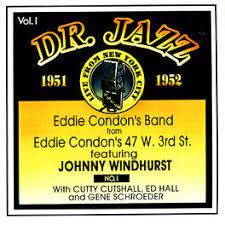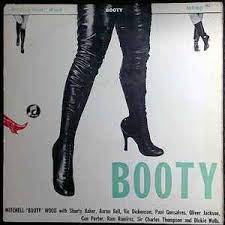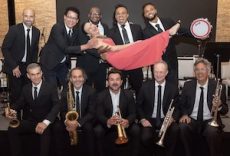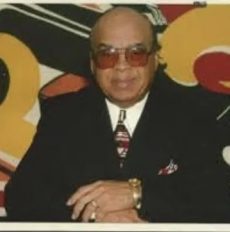
Daily Dose Of Jazz…
Cutty Cutshall was born Robert Dewees Cutshall on December 29, 1911 in Huntingdon County, Pennsylvania. Early in his career he played in Pittsburgh, Pennsylvania, making his first major tour in 1934 with Charley Dornberger. He joined Jan Savitt’s orchestra in 1938, then played with Benny Goodman in the early 1940s.
Later in the decade he worked frequently with Billy Butterfield and did some freelance work in New York City. He started working with Eddie Condon in 1949, an association which lasted over a decade. Cutshall’s credits include work with Peanuts Hucko, Bob Crosby, Ella Fitzgerald, and Louis Armstrong.
While touring with Condon in Toronto, trombonist Cutty Cutshall suffered a heart attack in his hotel room and transitioned on August 16, 1968.
More Posts: history,instrumental,jazz,music,trombone

Daily Dose Of Jazz…
Booty Wood was born Mitchell W. Wood on December 27, 1919 in Dayton, Ohio. He began playing professionally on trombone in the late 1930s. The following decade he worked with Tiny Bradshaw and Lionel Hampton before joining the Navy during World War II. While there he played in a band with Clark Terry, Willie Smith, and Gerald Wilson.
After his service ended he returned to play with Hampton, then worked with Arnett Cobb, Erskine Hawkins and Count Basie. After spending a few years outside music, Booty returned to play with Duke Ellington in 1959-60 and again in 1963. He returned once more early in the 1970s.
Wood once again played with the Count Basie Orchestra from 1979 into the middle of the following decade. Trombonist Booty Wood transitioned on June 10, 1987 in Dayton.
More Posts: history,instrumental,jazz,music,trombone

Daily Dose Of Jazz…
Merritt Brunies was born on December 25, 1895 into a well-known musical family in New Orleans, Louisiana. Among its members were trombonist George Brunies and cornetist Albert Brunies.
Merritt led his own band, The Original New Orleans Jazz Band, from 1916 to 1918. Though this ensemble never recorded, it existed before both Jimmy Durante’s New Orleans Jazz Band and the Original Dixieland Jazz Band. Following this, he formed another group which played at Friar’s Inn in Chicago, Illinois directly after the stint by the New Orleans Rhythm Kings.
He played regularly in New Orleans in the 1930s, however, by 1946 he moved to Mississippi. There he played with his brothers in a Dixieland jazz band until his retirement. Trombonist and cornetist Merritt Brunies transitioned on February 5, 1973 in Biloxi, Mississippi.
More Posts: bandleader,cornet,history,instrumental,jazz,music,trombone

GAFIEIRA RIO MIAMI
Special concert to celebrate the release of their debut album, Bring Back Samba.
Imagine Count Basie went down to Rio de Janeiro and combined his big band with a samba school. This is Gafieira Rio Miami, a one-of-a-kind, 11-piece Brazilian band created by bassist and Latin Grammy winner Diogo Brown. One of the most in-demand bass players in the industry, Brown has worked with renowned artists such as Laura Pausini, Buika, Nouvelle Vague and Gloria Estefan.
To put together this samba-jazz big band, he called on Latin Grammy-nominated saxophonist Dr. Pablo Gil and Pedro Carrero, former principal trombonist of the Simón Bolívar Symphony Orchestra. With a powerful five-piece horn section, plus bass, guitar, drums, percussion and the lovely vocals of Isa Duarte, Gafieira Rio Miami fuses samba, jazz and soul inspired by the 20th century Rio de Janeiro ballroom dance music known as samba de gafieira.
The group’s repertoire includes gorgeous arrangements of classics by Gilberto Gil, Djavan, Alcione, Moacir Santos and others. Get ready to experience the joyous energy of Gafieira Rio Miami!
Live on the Plaza is a series of outdoor concerts on our Parker and Vann Thomson Plaza for the Arts.
Please note: Tables can be purchased for 1, 2, 3 or 4 guests. Ticket prices are per person. Locations are assigned in the order of purchase in parties of up to four guests based on reservation type.
Doors open at 6 p.m. with light bites and beverage service.
Happy hour pricing available until 7 p.m.
Performance starts at 7:30 p.m.
More Posts: adventure,album,club,festival,genius,jazz,museum,music,preserving,restaurant,saxophone,travel,trombone,vocal

BOBBY FELDER ~ CHRISTMAS JAZZ GALA
Bobby Felder, trombone
Herb Scott, alto saxophone
Ben Sands, tenor saxophone
Michael Thomas, trumpet
Jon Ozment, piano
Wes Biles, bass
David Cole, guitar
Greg Holloway, drums
Bradley Thomas, Gail Shipp, Tya Ade, Dick Smith, vocals
More Posts: adventure,album,club,festival,genius,jazz,museum,music,preserving,restaurant,travel,trombone


